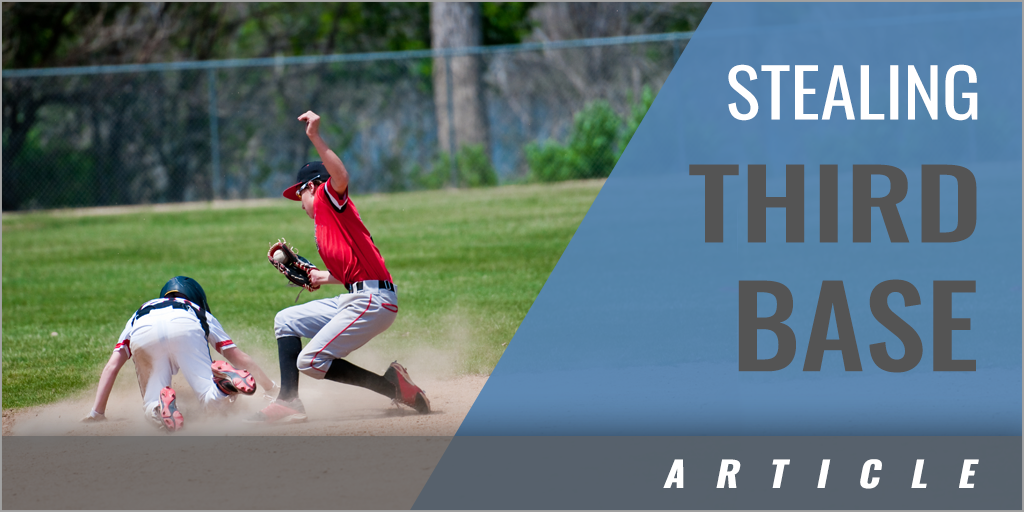|
By: Mike Roberts - Cotuit Kettleers (Summer Baseball League - Cotuit, MA) Originally Published in: Baserunning Provided by: Human Kinetics Once a runner arrives at second base, he has a freedom not available at first or third. Even though a throw from the pitcher to second base reaches the defensive player in about the same amount of time it takes to make a throw to the other bases, the runner knows the middle infielders play farther away from the base than on the corners of the infield. This additional space frees the runner's mind and relaxes him. Base runners take advantage of this space to saunter off the base more comfortably, take a walking lead, jump around, maybe dance away from the base, and just play with the pitcher more. For a runner, this freedom and space are a 90-foot (24.7 m) piece of base-stealing heaven. KNOWING AND READING PITCHERS FROM SECOND BASE There is nothing close to a science in knowing and reading pitchers. The base runner's ability and instinct improve with lots of concentrated practice, tremendous attention when others are on base, and experience on the basepath. Plus, mistakes by a base runner are an excellent teacher in the learning process. Even a prepared runner who has seen it all and cataloged pitchers' moves can be surprised. But the base runner who has studied pitchers' tendencies and movements knows what the pitcher is going to do before the pitcher does it. This is just smart baserunning. When I teach base runners about pitchers, I first talk about runners knowing the patterns of pitchers, both right- and left-handed, and their basic movements. I encourage runners to know these elements better than the pitchers themselves so they almost always know what the pitcher is going to do before the pitcher does. Overall, pitchers are not very "baseball intelligent." They practice moves to the bases very little and take runners on base for granted, acting at times as if they don't exist. Taking all of this into consideration, many more base runners should dominate pitchers and the defense. Ninety-nine percent of pitchers have essentially the same rhythm or pattern with runners leading off second base. The pitcher is on the back or side of the dirt portion of the mound between pitches and takes a quick glance at the runner. He then straddles the rubber and looks back quickly at the runner. With this peek at the runner, few pitchers get an accurate read of the runner's footage off the base. Finally, the pitcher places his back foot (pivot foot) on the rubber and turns his head to the catcher to pick up the signal. Runners' footage will vary, but much more important than foot-age is that runners have turned on the anticipation button and are concentrating on being slightly ahead of the pitcher's first movement after the catcher gives the signals. Runners' leads and jumps do not depend on when the pitcher moves. Most base runners still make the mistake of waiting to move until after the pitcher moves. Once the pitcher has the signal, his first significant movement is almost always with the head. The runner should anticipate a pitcher's head moving after the signal is taken and should have begun to move before the pitcher moves his head. Pitchers usually have a pattern of one or two looks at the runner before delivering to home plate. If the runner has practiced watching a pitcher's head, the number of turns toward second base by the pitcher should not bother him and in fact should actually help him improve his rhythm with leads and jumps at second base. Whatever the number of head turns, pitchers are robotic, easy to read, and slow in lifting the lead leg to deliver the ball to home plate or second base. It is rare that a pitcher will use a slide step when pitching with a runner on second base. Most pitchers prefer to use their normal leg kick. If a pitcher is using a slide step with a runner on second base, it is normally because he uses this step at all times from the stretch. The next body movement a base runner learns to read is a pitcher lifting his front or lead leg. When the pitcher lifts the lead leg, the runner must learn to read whether the knee is turning back toward second base, toward an inside move, or toward the plate for the throw home. When a pitcher turns to fake a throw or throw to second base, it is usually an extremely slow and robotic move. Many times the pitcher actually has no interest in throwing, and there is no defensive player near the base to catch the baseball from the pitcher. When a pitcher is definitely throwing home, the base runner should have picked this up early due to the pitcher's robotic head movement toward home plate and leg pickup after his eyes see the target. Very few pitchers pick the leg up while looking at second base. A base runner can use this time to take a tremendous jump, which leads to great success stealing third base. |







